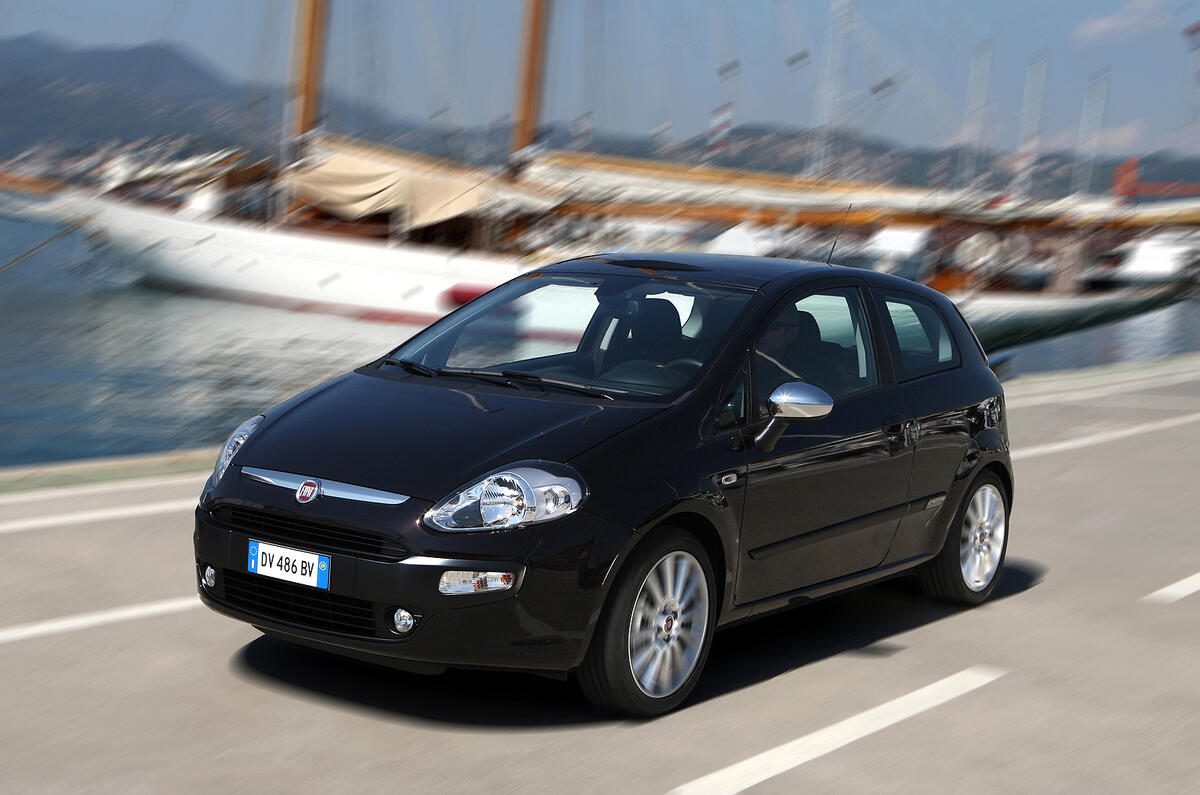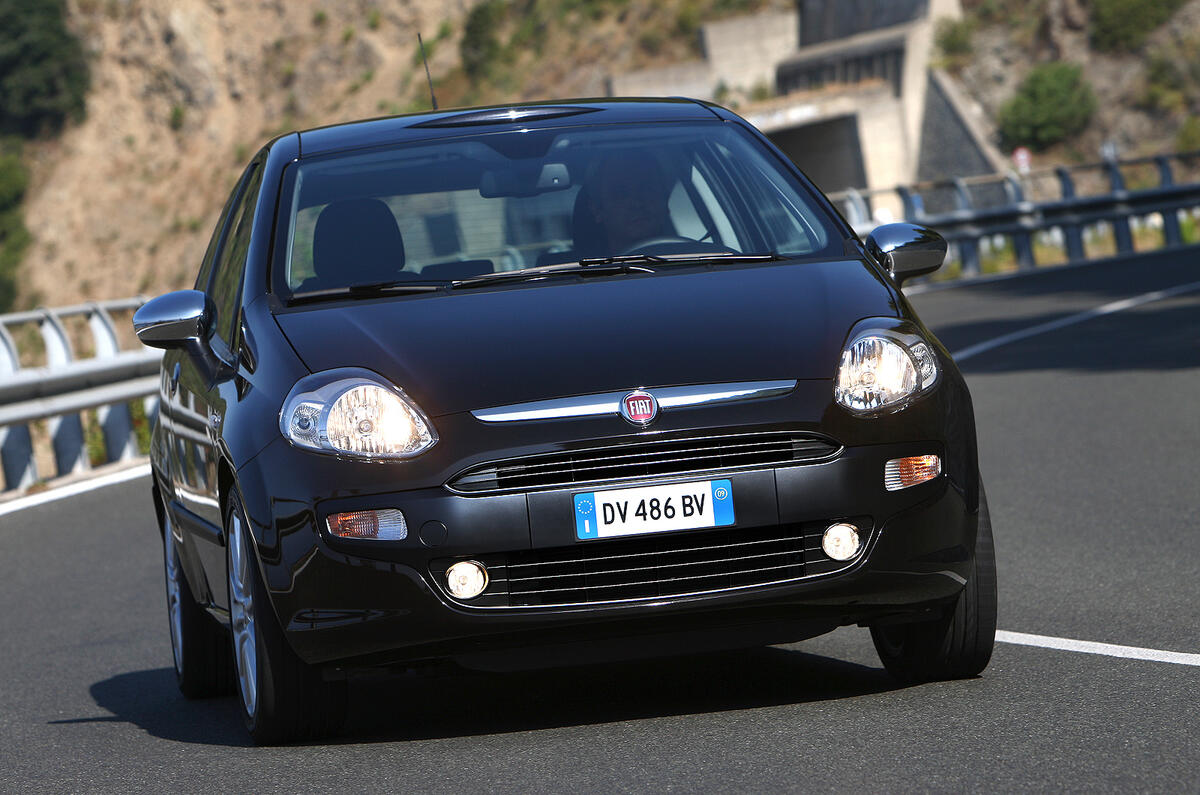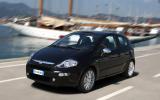What is it?
This is the facelifted Grande Punto, which - as covered in Autocar’s review of the MultiJet II version - includes a mild uglification of the front end, the adoption of LED daytime running lights, an integrated TomTom navigation docking station, an extra airbag for the driver’s knees and more oddments space inside the cabin. You can even keep track of your fuel economy and your driving style with an online-based advice program.
Yet, with the rigid steel monocoque body and the suspension only lightly fiddled, it’s the engines that star. It is a big step forward from previous base engines in the Grande Punto and it might point to a way out of the fuel-consumption and short-range doldrums of petrol engines.
What's it like?
Fiat claims the Punto Evo (a natural successor to the Grande Punto, even though the superseded car will stay on to cover Fiat’s flank from Korean and Chinese attacks) is a breakthrough car, and it’s hard to argue. Quite simply, a 104bhp 1.4-litre engine with no force-feeding assistance has no right to feel this strong.
It boxes with so much cleverness that it feels comfortably larger. The direct-action, hydraulically activated inlet valves give it dollops of torque right where you need dollops of torque and the short gearing on the five-speed manual ‘box helps, too.
It’s smooth, too, and there’s barely a tremor at idle. Push away from the lights and the front-drive Punto Evo feels much more like a 2.0-litre engine in its character, at least in the bottom half of its rev range.
Up to around 4000rpm, it moves the five-door hatch purposefully and refuses every offered excuse to shudder, strain or lapse into harshness.
It helps that the gearing is so short, but Fiat figures the lower-powered, non-turbo Punto Evos will live most of their lives in cities, so straining at higher revs on the highway is a small price to pay for what is effectively cheap, urban muscle.
So, if 77bhp (at 6000rpm) and 85lb ft of torque (at 3250rpm) seem like a tiny numbers in this day and age, it’s coming from an engine that is unstressed and feels it every inch of the way. Sprinting to 62mph is, obviously, not a forte, but its combined fuel consumption is down at 52.3mpg, with just 132g/km as well.
It will stretch across the traditional sprint in 13.2 seconds and will top out at just 103mph, but it’s more about rolling in-gear acceleration than outright speed. And, in rolling in-gear acceleration, it’s more than strong enough in normal traffic.
Another sign of its city focus is the addition of Start&Stop, Fiat’s take on the fuel-saving technology that is sweeping through Europe’s car industry. This version works if you come to a halt, pop the gear lever into neutral and release the clutch. Then, once you push the clutch pedal back in, it will have the engine re-fired before you’ve shifted back into first gear.
While its two-stage steering system (you can push a button for lighter city steering) is silly and over-complicating things, the steering itself is accurate and light and the suspension upgrades see it walk across hard-edged bumps with far more assurance than the old car.
The seats, though, are perhaps the only truly disappointing aspect of the car. They are flat and unsupportive and not particularly comfortable in any situation.



















Join the debate
Add your comment
Re: Fiat Punto Evo 1.4 Multiair
no and looks are subjective..ive grown to like the evos look,esp the abarth..
Re: Fiat Punto Evo 1.4 Multiair
Hi Folks I think I'm missing the point on this styling business: I bought my Punto Evo as a workhorse. I get 46mpg (in mountainous countryside) and it is utterly reliable. I can't criticise its comfort or practibility. Am I missing the point?
Re: Fiat Punto Evo 1.4 Multiair
Autocar, have you given this review to the work experience student? Have you made the proof reader redundant?
It's a very amateur review. Editor, if you want someone better please get in touch!